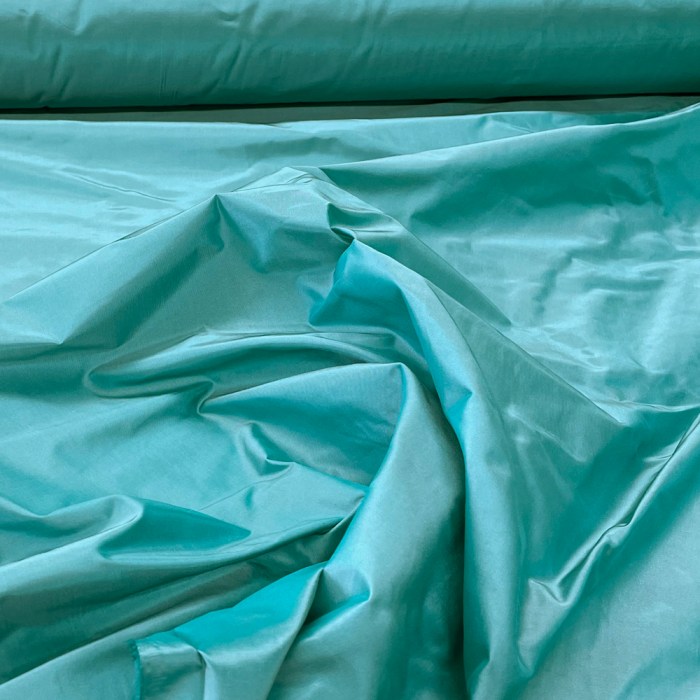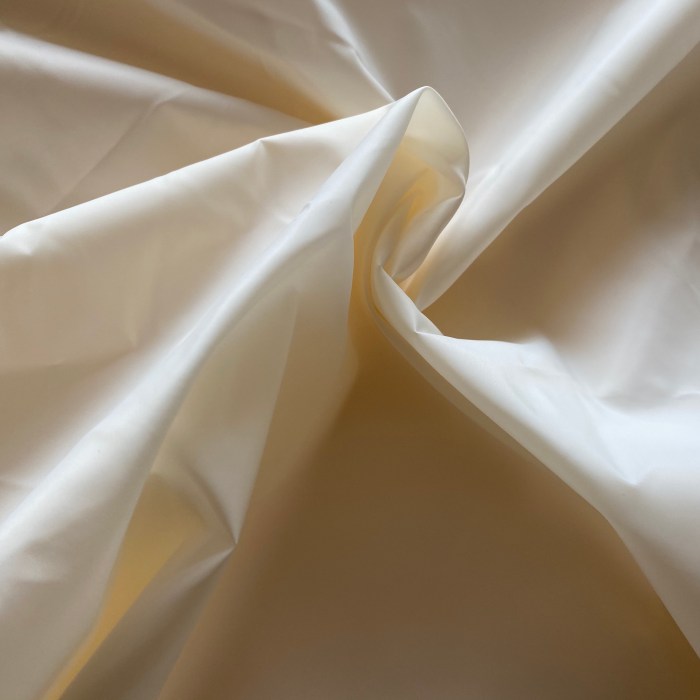A fine lustrous silk fabric with a crisp texture – Fine lustrous silk fabric with a crisp texture embodies a captivating fusion of elegance and durability. Its origins, production, and applications have shaped the textile industry for centuries, leaving an enduring legacy in fashion, home decor, and beyond.
This fabric’s exquisite drape, soft touch, and lustrous sheen stem from a unique production process that involves meticulous silkworm cultivation, skilled weaving techniques, and advanced finishing treatments.
Fine Lustrous Silk Fabric: A Fine Lustrous Silk Fabric With A Crisp Texture

Fine lustrous silk fabric is renowned for its exceptional beauty and luxurious texture. Its origins can be traced back to ancient civilizations, where it was a symbol of wealth and prestige.
Origin and History of Fine Lustrous Silk Fabric
The origins of fine lustrous silk fabric can be traced back to China during the Han Dynasty (206 BCE220 CE). The Chinese developed sericulture, the cultivation of silkworms to produce silk, and guarded the secrets of its production for centuries.
Silk became a valuable commodity, traded along the Silk Road to Europe and beyond. Over time, the production of fine lustrous silk spread to other regions, including Japan, India, and Persia, each contributing to its own unique style and techniques.
Production and Manufacturing Process, A fine lustrous silk fabric with a crisp texture
Producing fine lustrous silk fabric is an intricate process that involves several steps:
-
-*Silkworm Cultivation
Silkworms are raised on a diet of mulberry leaves. The quality of the silk is directly influenced by the health and diet of the silkworms.
-*Cocoon Formation
After feeding, the silkworms spin cocoons made of a single, continuous strand of silk fiber.
-*Reeling
The cocoons are boiled to loosen the silk fibers, which are then reeled onto spools.
-*Spinning
The reeled silk fibers are twisted together to form a yarn.
-*Weaving
The yarn is woven into fabric using various techniques, such as plain weave, twill weave, and satin weave.
Characteristics and Properties
Fine lustrous silk fabric is characterized by its:
-
-*Softness
The smooth, continuous fibers of silk give the fabric a soft and luxurious feel.
-*Drape
Silk’s drape is exceptional, allowing it to flow and fall elegantly.
-*Durability
Silk is a strong and durable fabric, resistant to wear and tear.
-*Luster
Silk’s unique luster is due to the triangular prism shape of its fibers, which reflects light and creates a shimmering effect.
Applications and Uses
Fine lustrous silk fabric is highly versatile and finds applications in various industries:
-
-*Fashion
Silk is used in high-end garments, such as dresses, blouses, and scarves.
-*Home Decor
Silk is used in curtains, upholstery, and bedding, adding a touch of luxury to interiors.
-*Accessories
Silk is used in ties, scarves, and other accessories, adding a sophisticated touch.
-*Industrial
Silk is used in parachutes, fishing lines, and medical sutures due to its strength and durability.
FAQ Overview
What distinguishes fine lustrous silk fabric from other fabrics?
Its exceptional softness, drape, and lustrous sheen set it apart, resulting from the unique properties of silk fibers and the intricate production process.
How is fine lustrous silk fabric produced?
It involves cultivating silkworms, extracting silk fibers, and weaving them using specialized techniques to achieve its characteristic crisp texture and lustrous appearance.
What are the common applications of fine lustrous silk fabric?
It is widely used in high-end fashion, creating elegant garments, accessories, and home decor items that exude luxury and sophistication.

